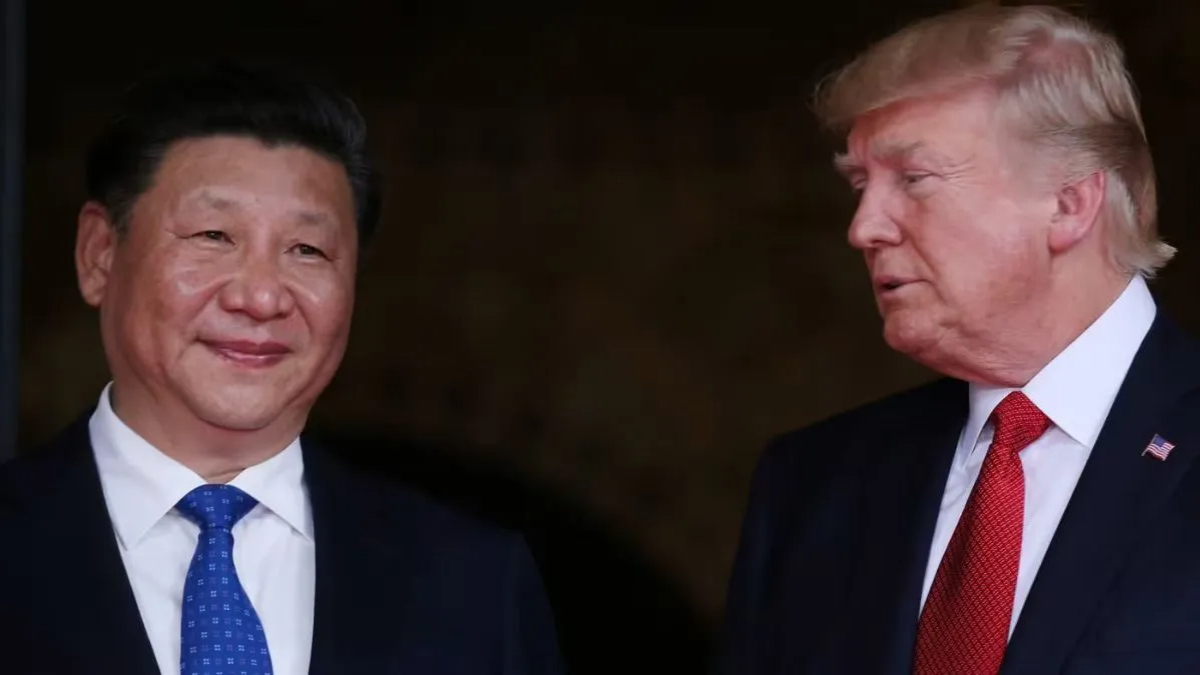US President Donald Trump’s “kind reciprocal tariffs” against many countries or trading blocs, including an uninhabited Heard Island and McDonald Islands, officially came into effect today. Russia, however, was left out of the list as the US doesn’t “do business with them”. Under the second Trump administration, Washington has imposed steep tariffs – a 104% tariff on China, 27% on India and 20% on the European Union (EU) – on top of a baseline 10% tariff that was already in place.
Many countries, including China, have responded to the “reciprocal tariffs”. China released a White Paper addressing its stance on trade with the US, noting that it would take appropriate measures in response to Trump’s escalating tariffs on Chinese goods. The paper stated that trade disagreements between the two global powers were “normal”, and emphasised that the country is willing to hold talks with America.
Trump initially announced a 34% tariff on Chinese imports, and China levied a matching 34% tariff against all American products in retaliation. The US President then imposed an additional 50% tariff on China after Beijing didn’t waive its duties on US goods. China’s Commerce Ministry “firmly opposed” it and called it “a mistake upon a mistake”. When Trump’s first presidential term ended, the US had imposed a 19.3% average tariff on Chinese goods. The Biden administration maintained that level, with the average increasing slightly to 20.8%.
US-China Trade War: Imports, exports, and deficits
Amid the ongoing trade war, the volume of trade between the two nations remains substantial. According to the Observatory of Economic Complexity (OEC), the US was China’s third-largest export market in 2023, with exports totalling $154 billion. Soybeans, valued at $15.2 billion, were the top US export to China, while broadcasting equipment were China’s biggest export to the US, worth $54.5 billion. In total, China exported $436 billion worth of goods to the US in 2023, making the United States the largest importer of Chinese products.
According to data from the Office of the United States Trade Representative, the total goods trade between the US and China in 2024 stood at an estimated $582.4 billion. US goods exports to China were $143.5 billion, a 2.9% decline ($4.2 billion) from 2023. On the other hand, goods imports from China totalled $438.9 billion, reflecting a 2.8% increase ($12.1 billion) from the previous year. This pushed the US goods trade deficit with China to $295.4 billion in 2024, marking a 5.8% rise ($16.3 billion) over 2023.
What do both countries import and export from each other?
The high-tech sector, particularly semiconductors, is especially vulnerable to rising tariffs. China imports approximately $10 billion worth of chips from the US annually, including $8 billion worth of central processing units (CPUs) manufactured by Intel in the United States. These CPUs are essential components in laptops and servers, and in 2024, China emerged as Intel’s largest market, accounting for 29% of the company’s global revenue, up from 27% in 2023.
US memory chipmaker Micron could also face some fallout, although the company has manufacturing facilities in China and other countries. However, Nvidia’s popular artificial intelligence chips, which are in high demand in China, are not subject to Chinese tariffs, as they are produced in Taiwan by contract chip manufacturer TSMC.
The agricultural and farm equipment sectors in the US are also feeling the heat from China’s retaliatory tariffs. Beijing has added a 34% duty on these products, significantly impacting major US firms like Caterpillar, Deere & Co, and AGCO. Furthermore, China has suspended imports of sorghum from C&D (USA), citing food safety concerns. It has also put on hold imports of poultry meat, bone meal and other poultry products from American companies.
China’s exports to the US in 2023 featured a wide range of consumer and industrial goods. These included broadcasting equipment, computers, office machine parts, electric batteries, heaters, toys, video and card games, seats, furniture, party decorations, knit sweaters, plastic products, motor vehicle parts and accessories, clothing, footwear, mattresses, light fixtures, metal mountings, iron housewares, and medical instruments, according to a report by OEC.
When it comes to state-by-state imports, China remains the United States’ third-largest trade partner, accounting for 13.4% of all US imports in the previous year. States with the highest dependence on Chinese imports include Nevada, which sourced 26% of its imports from China, followed by California at 25%, and Washington DC and New Mexico, each at 21%. On the opposite end of the spectrum, Montana was the least reliant, with just 1% of its imports originating from China.
OEC reported that US exports to China in 2023 included soybeans, crude petroleum, petroleum gas, cars, integrated circuits, special machinery, gas turbines, vaccines, blood products, antisera, toxins and cultures, packaged medicaments, acyclic hydrocarbons, beauty and skincare products, corn, scrap copper, raw cotton, ethylene polymers, and other plastic products.
Impact on the global economy
With the ongoing trade war between the United States and China, the global economy is bound to feel the strain, given that the two nations together represent 43% of the world’s economic output in 2025, according to the International Monetary Fund.
It not only hampers bilateral trade but also threatens global investment and economic growth. As tensions escalate, investor confidence could weaken, leading to a slowdown in cross-border capital flows and development.
China has a massive goods surplus, around $1 trillion. With exports far exceeding imports, there is a growing risk that China may offload excess products into international markets. This practice, often referred to as “dumping”, could flood global markets with low-cost goods, putting local manufacturers under pressure, threatening jobs, and pushing down wages in affected countries.
China-US economic and trade relations: What does the White Paper say?
In its White Paper, China said that it has been 46 years since the establishment of diplomatic relations between China and the US, as the world’s largest developing country and the largest developed country.
It added that both countries have strong complementarities in natural resources, human resources, markets, capital, and technology, and can fully achieve mutual benefit and win-win outcomes. China-US economic and trade relations are not only significant for both countries but also have an important impact on global economic stability and development.
China said that there are no winners in a trade war and nor does it want to fight a trade war. However, it noted that it would not sit idly by and watch the legitimate rights and interests of the Chinese people be harmed and deprived. If the US insists on further escalating economic and trade restrictive measures, China will see it through to the end.
While it is normal for China and the US to have differences in economic and trade cooperation, the White Paper hopes that the US will meet China halfway, rather than using tariffs as a weapon to exert maximum pressure and seek private gain, which is a typical act of unilateralism, protectionism, and economic bullying.
China also noted that the US is its largest source of service trade deficit. In 2023, this deficit reached $26.57 billion, accounting for 9.5% of the US’s total service trade surplus.
Despite the ongoing trade war, China’s overall economic indicators remained robust. In 2024, the country’s total imports reached 18.4 trillion yuan, reflecting a year-on-year growth of 2.3%.
Trump on Truth Social
“I’m proud to be the President for the workers, not the outsourcers; the President who stands up for Main Street, not Wall Street; who protects the middle class, not the political class; and who defends America, not trade cheaters all over the globe,” Trump wrote on Truth Social a few hours back.
He earlier said that Washington is “managing a massive amount of requests for negotiations on tariffs”.
(With inputs from agencies)








